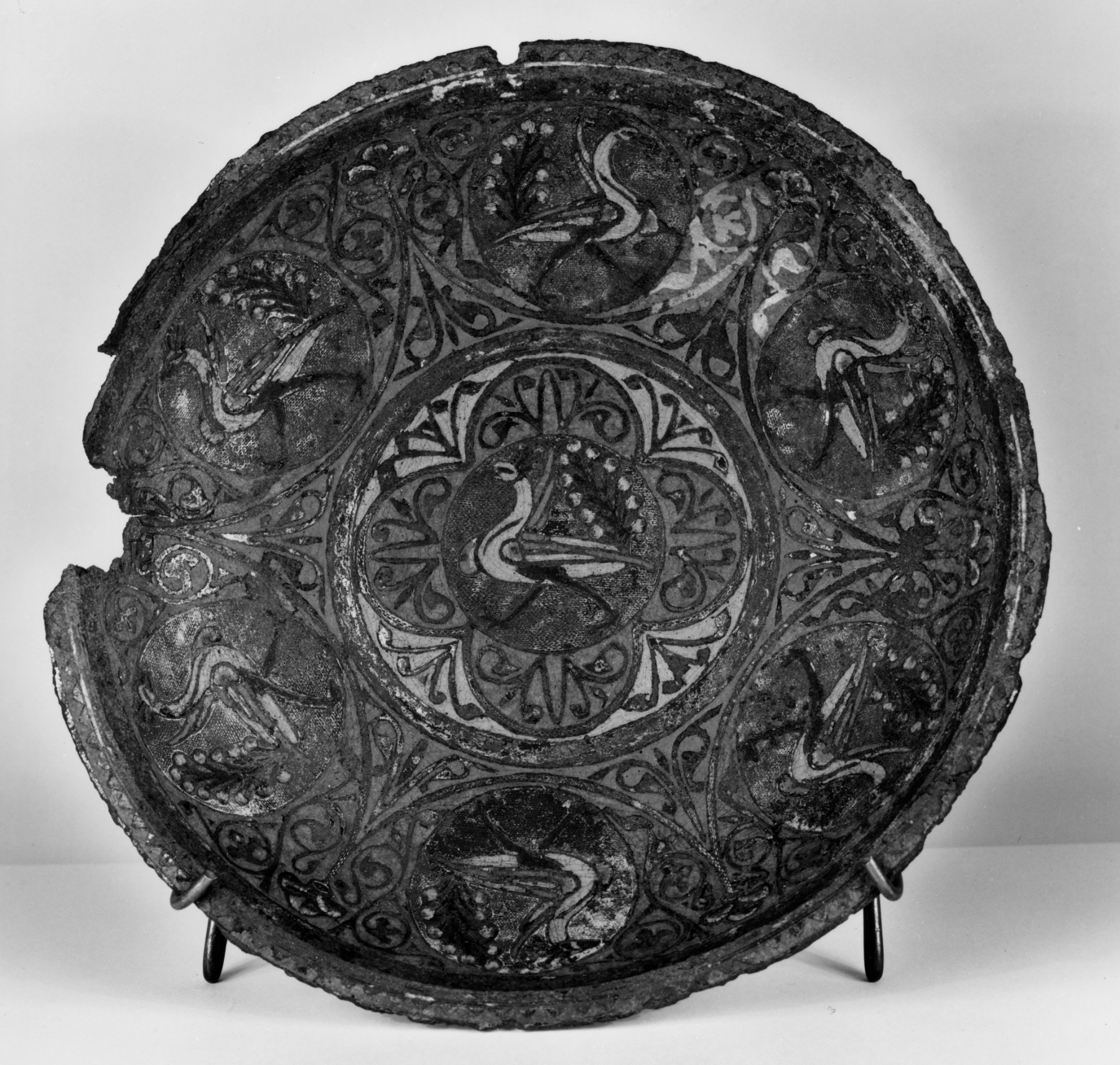Gemellion (Liturgical Plate) with Peacocks
(Medieval Europe )
A gemellion (from the Latin geminus, meaning twin) is one of a pair of basins used to wash hands, both at home and during mass. Water was poured from the spouted bowl over the hands and was caught in the second bowl placed as a basin below. Many gemellions made in the enamel manufacturing center of Limoges were decorated with secular-themed designs. This gemellion is adorned with peacocks, a symbol of beauty, paradise, and immortality in the Middle Ages.
Provenance
Provenance (from the French provenir, 'to come from/forth') is the chronology of the ownership, custody, or location of a historical object. Learn more about provenance at the Walters.
[Found in the Seine, Paris]; Henri Daguerre, Paris, by purchase; Henry Walters, Baltimore, 1927, by purchase; Walters Art Museum, 1931, by bequest.
Geographies
France, Limoges
(Place of Origin)
France, Seine (Place of Discovery)
Measurements
8 7/8 in. (22.5 cm) (diam.)
Credit Line
Acquired by Henry Walters, 1927
Location in Museum
Accession Number
In libraries, galleries, museums, and archives, an accession number is a unique identifier assigned to each object in the collection.
In libraries, galleries, museums, and archives, an accession number is a unique identifier assigned to each object in the collection.
44.71


